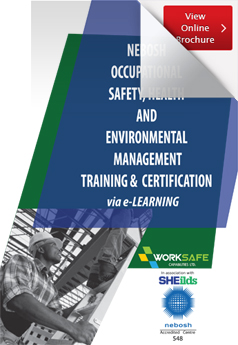Why seek a Health and Safety Qualification?
Nakumatt Downtown. Libra House. Kariobangi Light Industries. Kenya Pipeline Mukuru Slums. Chernobyl, Russia. Union Carbide, Bhopal, India. Mtongwe Ferry. Sachangwan. Countless fatal road accidents and school dormitory fires.
All these disasters that resulted in massive loss of life are just some of the more spectacular examples of safety risk management failures, arising out of gaps in risk awareness and identification.
Every day, we receive reports of grisly accidents on the road, at home and at work. Fires, car crashes and falls. A career cut suddenly short. A promising life tragically ended. A young family left destitute. Sometimes, these happen to someone you know, a family member, a loved one, a colleague, a friend, or even ourselves!
We all feel helpless in the face of these horrific fates, but still wonder if there isn’t something we can personally do to stop the tragedies from happening.
Well, there is!
One way to effectively prevent recurrence is Safety Management Training.
Taking a health and safety course equips you with the tools to manage risks and help ourselves and others prevent accidents, most of which are borne out of a lack of knowledge or appreciation of dangerous situations.
What is Occupational Health and Safety Management
Occupational Health and Safety Management is a function that enhances organizational performance by predicting operational, procedural or environmental risks and threats before they occur. Safety Management is a strategic process that identifies, assesses and addresses safety issues for employees and the organization.
Beyond being a pre-emptive and preventative process, safety management also corrects deficiencies and performance errors.
The objective of safety management is therefore, to prevent human injury or loss of life, and to avoid damage to the environment and to property.
The Occupational Health and Safety Act, 2007 requires, amongst other things, employers to keep their employees safe in the workplace.
There is therefore a significant need for effective health and safety management in the workplace. The International Labour Organisation (ILO) recently estimated that the total cost of occupational accidents and illnesses amounts to approximately 4% of the world’s GDP!
In a world where employers are increasingly conscious of risk and liabilities arising from poor accident records, having a Health and Safety qualification may also help increase your employability chances and career prospects, whatever your current background, especially in the growing high-risk industries of Oil and Gas, Mining, Energy, Infrastructure and General Construction. Indeed, it may be that, as some of these sectors and regulation matures, it will be mandatory to possess health and safety qualifications in order to participate as a player in these industries.


